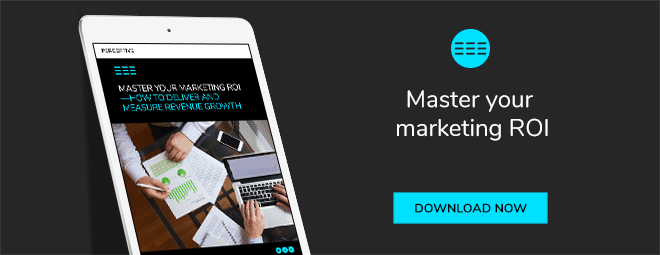If you want to boost your brand profile, it can pay to be creative. Here are three strategies that can have a big impact on how your brand is viewed by your customers.
Read more: How to track, measure and improve your brand health, our free online guide.
1. Improve your social proof
These are the moments on when your TikTok feed shows your friends using a particular product, or when your best mate messages you that XYZ series that dropped on Netflix is a ‘must watch’ or any number of instances where you see a product or service used and recommended by people you know or follow.
That's social proof in action.
Because humans are social creatures, social proof is a psychological phenomenon where people take their cues from others, copying their actions and behaviour to fit in. It is especially prevalent when people are faced with uncertainty, for instance, when confronted with something new, like a product they’re never heard of.
In the world of business and brands, social proof is immensely powerful for building brand trust. By allowing consumers to see and hear from people using or experiencing your product—especially if coming from someone they know—it builds trust in your brand’s offering.

In today’s world filled with social media and influencers, social proof is often how people learn about your company. Here are a few ways you can leverage it for your brand:
- User reviews: this is the most cost-effective strategy. Encouraging your customers to leave reviews on sites like Google or Trip Advisor can work wonders, and also boost the SEO traffic to your website. A word of warning: obviously you’ll want positive reviews, therefore a customer’s experience of your brand needs to be top notch, from the customer service they experience through to any brand touchpoints they go through, such as your website, social media, booking systems, transaction systems and processes.
- Brand ambassadors: this can be celebrity endorsements or even sponsorship of shows or sports teams. The key is to get the word out there and lots of positive buzz going. A bit of awesome PR goes a long way.
- Expert sources: depending on your business, using statistics or expert quotes, can enhance your credibility, and even more so if they are shared on by a credible source (such as a renowned authority on the subject, think Harvard Business Review or the like).
- Word of Mouth (WOM): word of mouth may be the hardest thing to achieve or influence but if you’re doing enough positive things and a good job of customer experience and overall satisfaction, your word of mouth could be doing the job for you.
While positive social proof is powerful, negative social proof can be massively detrimental to a brand, and could dissuade potential customers rather than encourage them. Nevertheless, simply letting people know this that "this is what everyone else is doing, why aren’t you doing the same", is often the most effective strategy for getting people to act.
Related content: What are the brand tracking KPIs for a brand manger to monitor?
2. Highlight your brand’s values
Being on the same page with your customers and sharing the same values is a key factor to building a strong and lasting relationship with your customers. Shared values has been described as the main reason customers have a brand relationship.
So, tell your customer what you stand for, and just as crucially, know yourself what you stand for. If you’ve done your due diligence, you already know who your ideal target audience is, what they relate to, and have aligned your brand to those values. If you haven’t, we recommend doing a bit of customer discovery before going any further.
Read more: Building Your Brand: a free guide to grow and scale your brand
To ensure your brand and business stay aligned to your consumers’ needs and values, it also pays to regularly survey your customers along with regular brand health checks. Times change, so it’s important to ensure your brand and consumers remain aligned. For this reason alone, customer segmentation and is one of the best things you can do for your business strategy.
Case study: Discover how a segmentation study gave MetService a holistic understanding of the weather information market.
3. Give back
Doing something nice for your customers, be it in the form of a freebie, special discounts or exclusive access, is always a good idea—even more so when it is unexpected. This is when the gesture is more powerful, and leaves a stronger impression on the receiver, and is more likely to be remembered in a positive way. You may want to only play this card only with your VIP or higher value customers (those who spend the most), as assumedly, these people will end up buying more than you average customer would over their customer lifecycle.
Alternatively, you may opt to give back to your local community, such as sponsoring a local sports team or community programme, hosting an event, or supporting a cause. While this strategy may not result in a direct short-term boost of sales, research has shown cause-related marketing does have a positive impact on brand perception, with its impact particularly effective on women and for local causes (as opposed to national ones). For this reason, cause-related marketing could be a powerful component of your long-term brand building strategy.
So, even if they haven’t bought anything in a while, or haven’t interacted with you at all for a year, do something nice for your customers and the communities they live in.
Want to learn about how to drive ROI for your business and how to measure marketing efficiencies? Download our free ebook.
